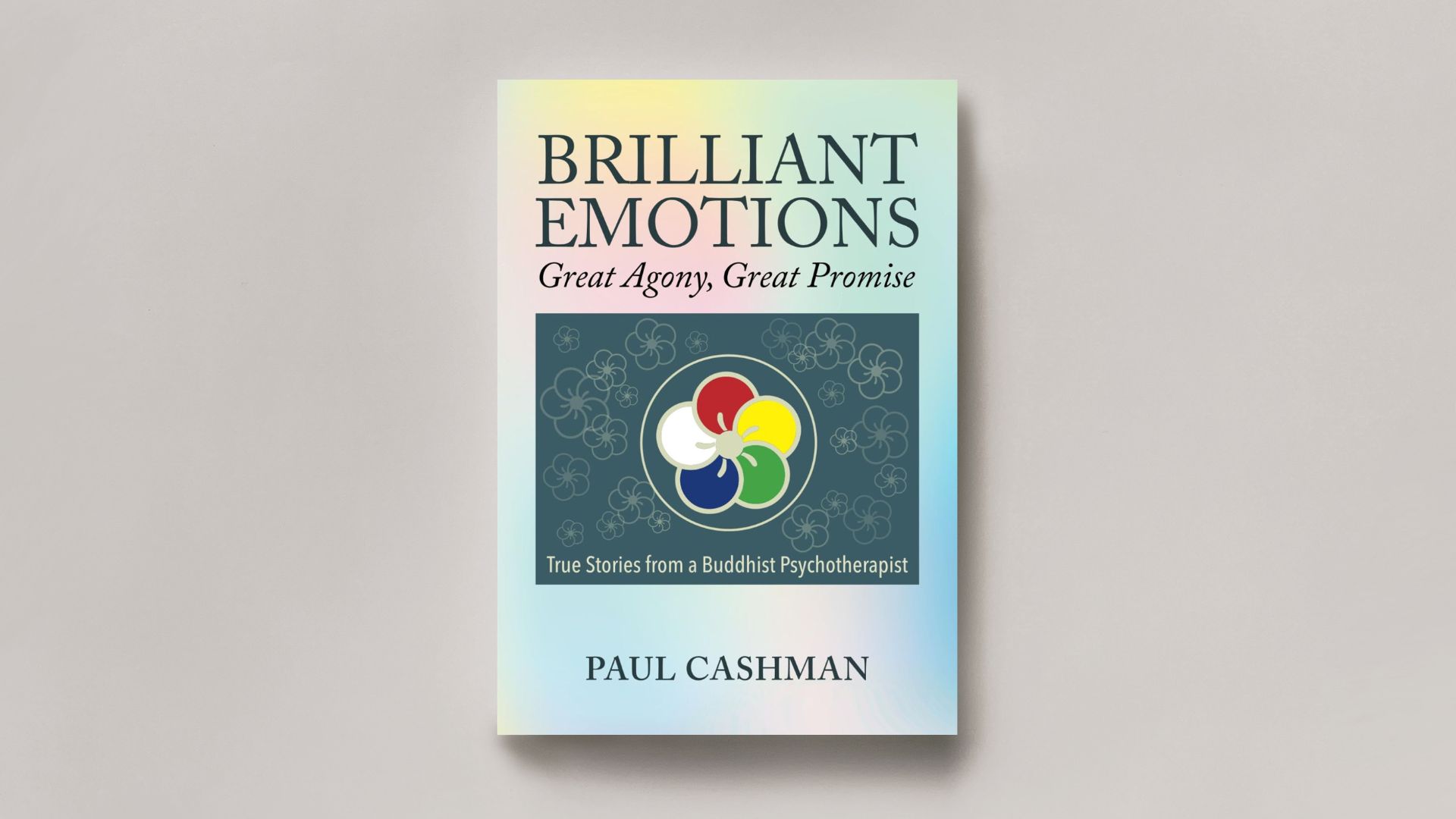We live in a world that loves to tell us how to fix our emotions—calm down, cheer up, stay positive, let it go. But what if the real answer isn’t about fixing anything? What if emotions, even the messy ones, are actually trying to help us? That’s the core idea behind Brilliant Emotions by Paul Cashman, a book that flips the script on how we deal with feelings like anxiety, anger, and sadness. Instead of running from them, Cashman invites us to turn toward them, listen to them, and—if we’re willing—let them transform us.

What’s This Book About?
Cashman, a Buddhist psychotherapist, lays out a practice rooted in Vajrayana Buddhism that helps us engage with emotions in a way that’s neither overwhelming nor avoidant. It’s not about “managing” emotions or forcing positivity—it’s about experiencing them fully and letting them move through us without resistance or judgment.
At the heart of the book are two key frameworks.
The Four Karmas: Four Ways of Engaging with Emotions
These serve as different approaches to working with emotions, depending on what’s needed in the moment:
- Pacifying – Calming emotional turbulence without suppressing or numbing. Instead of avoiding a difficult emotion, you sit with it, let it settle, and observe.
- Enriching – Learning from emotions instead of battling them. Every feeling has wisdom if you’re willing to listen.
- Magnetizing – Drawing energy and insight from emotions rather than being drained by them.
- Transforming – Shifting emotions into a source of empowerment. Instead of being consumed by anger or sadness, you use them as fuel for growth.
The Four-Step Practice: A Guide for Working with Emotions
This is where the book gets practical. Cashman outlines a method to help us stay present with emotions in a way that allows them to unfold naturally:
- Touching (Pacifying) – When a strong emotion arises, rather than getting stuck in the mental story around it, you shift your focus to how it feels in your body. Where is it sitting? What’s the sensation?
- Exploring (Enriching) – You investigate the emotion like a scientist—its temperature, texture, movement—without trying to fix or change it. Just pure observation, no labels.
- Befriending (Embracing) – Instead of resisting discomfort, you welcome it in. This step is all about dropping the fight and letting yourself fully experience the emotion with warmth and curiosity.
- Liberating (Transforming) – The final step expands awareness beyond the emotion itself. You’re still feeling it, but you’re also aware of your body, your breath, the space around you. The emotion moves through you instead of trapping you.
Rather than offering a quick fix, Cashman gives readers a practice—one that, when applied, can change the way we experience emotions altogether.
What This Book Does Well
One of the biggest strengths of Brilliant Emotions is that it moves beyond the usual “reframe your thoughts” advice that dominates the self-help world. Cashman doesn’t tell you to suppress or control your emotions; he teaches you how to experience them in a way that leads to transformation. It’s an approach that feels more embodied, more intuitive, and honestly, more sustainable.
Another win? The book is accessible. While it’s rooted in Buddhist principles, you don’t need any prior knowledge of Buddhism to get something out of it. The language is clear, the examples are relatable, and the exercises are practical. Cashman has a way of making even the most abstract concepts feel grounded.
This book also does something that a lot of self-help books don’t: it makes space for real emotions, not just the ones we’re comfortable with. So many books focus on cultivating happiness or reducing stress. Brilliant Emotions acknowledges that being human means feeling the full spectrum—rage, jealousy, grief, fear—and instead of pathologizing those emotions, it helps you work with them. Cashman does this with the help of human examples and real-world scenarios that feel relatable.
A Few Potential Critiques
If you’re looking for a “do this, then this, and in five steps your emotions will be healed” kind of book, this isn’t it. Brilliant Emotions requires patience and a willingness to sit with discomfort—something not everyone will love. Also, while the book offers exercises, it leans more into philosophy than rigid step-by-step instruction, which might not be ideal for those who prefer a more structured self-help approach.
Additionally, this kind of deep emotional work takes practice. Cashman presents the Four-Step Practice as a way to integrate emotions rather than be ruled by them, but let’s be real—it’s not a one-and-done deal. You’re not going to read this book and suddenly become a Zen master at handling your emotions overnight. It’s a process, and that’s something the book could have emphasized a little more.
Final Thoughts
Brilliant Emotions is a refreshingly different take on emotional well-being. Instead of running from our feelings or getting stuck in them, Cashman offers a path to truly understanding and transforming them. If you’re someone who wants to develop a deeper, more conscious relationship with your emotions—not just manage them—this book is absolutely worth the read.
It’s not a light self-help book you breeze through in a weekend. It’s a book that asks something of you: your attention, your willingness, your presence. But if you give it that, it has the potential to fundamentally shift the way you experience emotions—not as something to fix, but as something to befriend.















